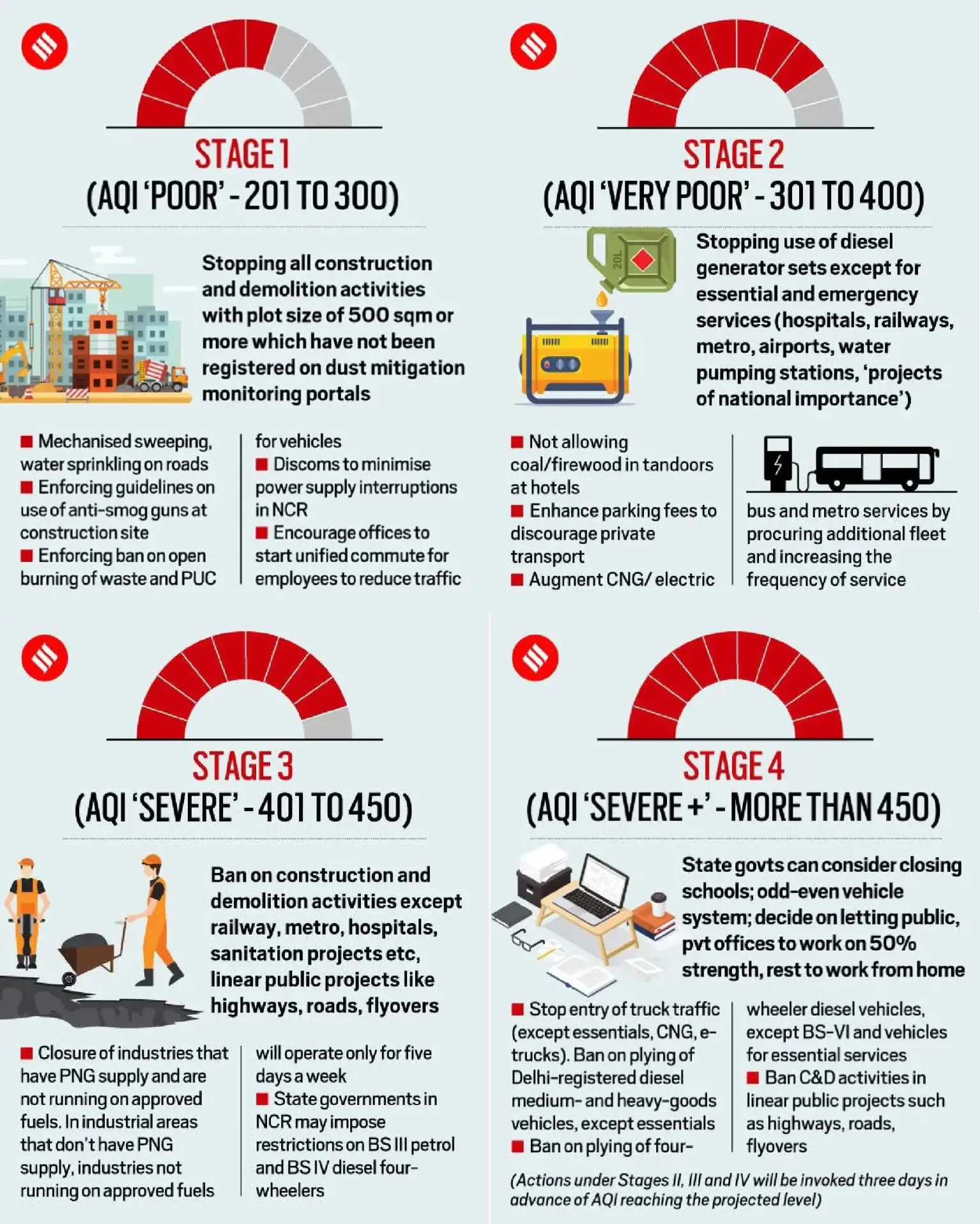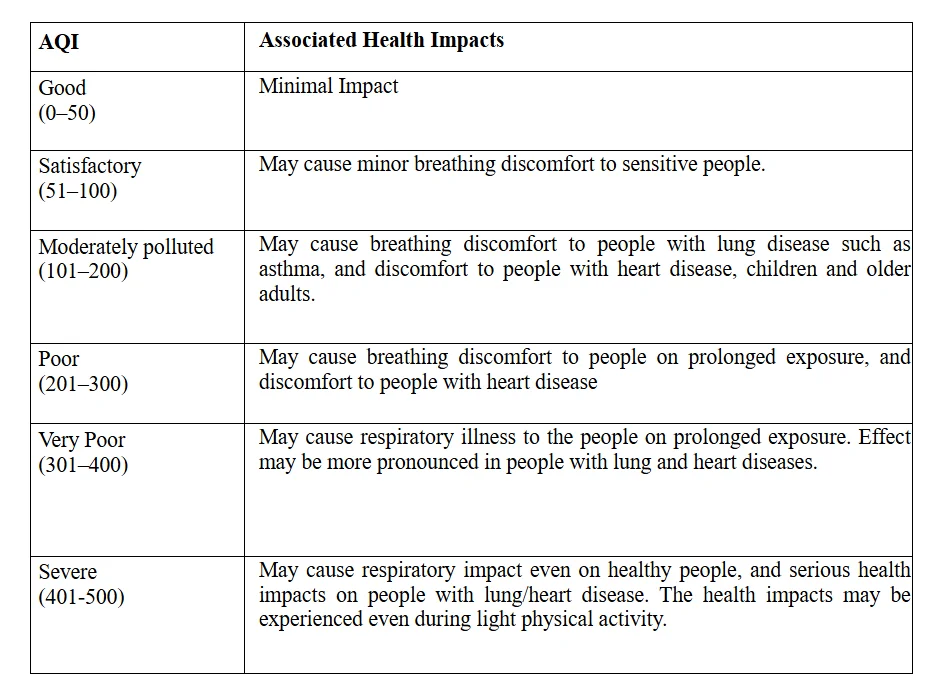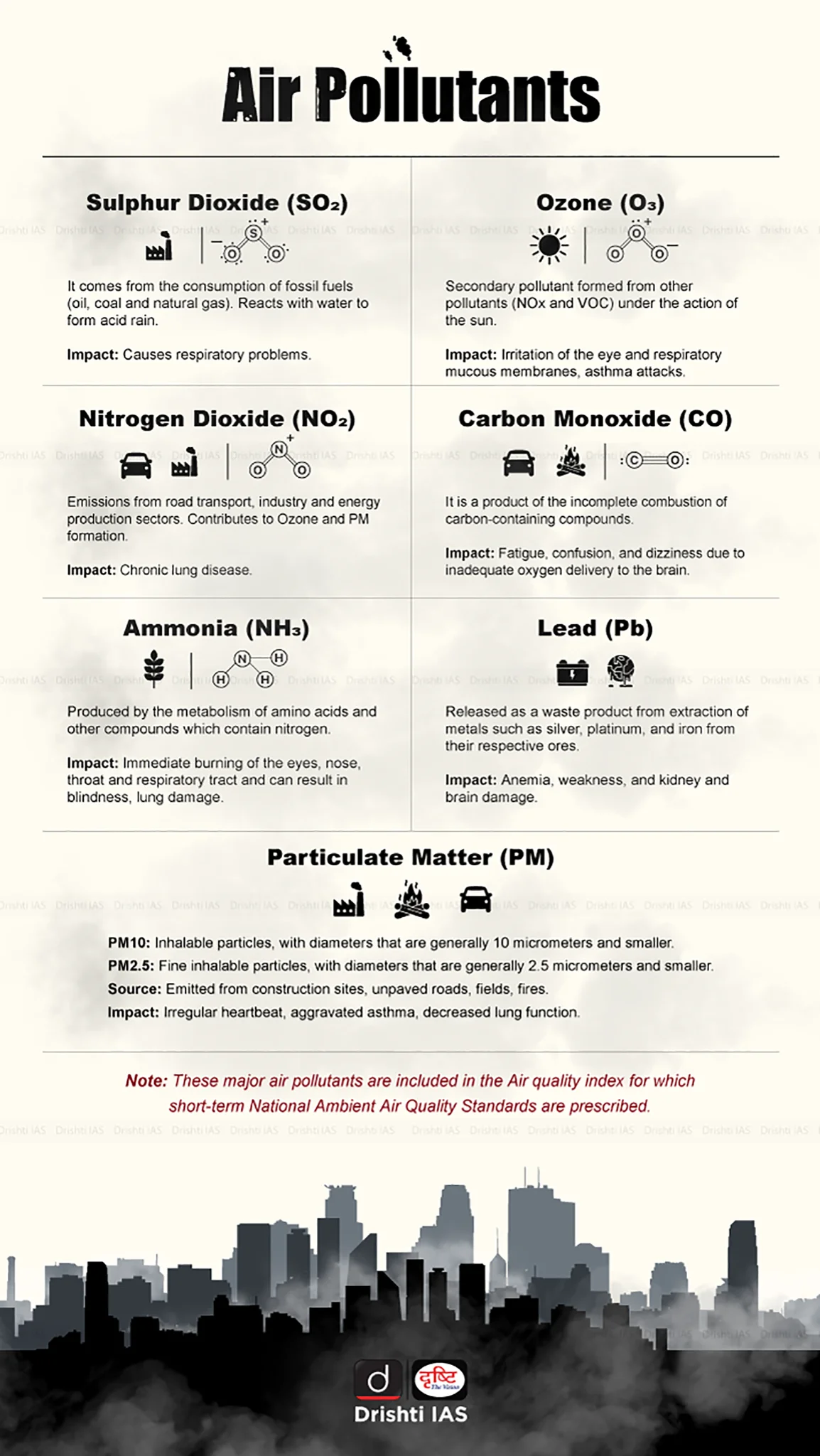Important Facts For Prelims
Graded Response Action Plan (GRAP)
- 16 Oct 2025
- 6 min read
Why in News?
Delhi’s Air Quality Index (AQI) reaching the ‘Poor’ category prompted the Commission for Air Quality Management (CAQM) to invoke Stage-I of the Graded Response Action Plan (GRAP) across the National Capital Region (NCR) to prevent further deterioration in air quality.
What is a Graded Response Action Plan (GRAP)?
- About: The GRAP is a pre-emptive and emergency framework designed to control and reduce air pollution levels in the Delhi-NCR region.
- It was formulated under the directions of the Supreme Court of India in the case of M.C. Mehta v. Union of India (2016).
- GRAP was officially notified and came into effect in 2017 and is implemented by the Commission for Air Quality Management (CAQM) in coordination with the Ministry of Environment, Forest and Climate Change (MoEFCC) and state authorities.
- The plan categorises pollution response measures into four stages, depending on the AQI levels.
- Stages of GRAP:
- Stage I – Poor (AQI 201–300): Basic pollution control measures like road dust management and enforcing vehicle PUC (Pollution Under Control) norms.
- Stage II – Very Poor (AQI 301–400): Stricter actions such as limiting diesel generator use and controlling operations in pollution hotspots.
- Stage III – Severe (AQI 401–450): Imposes restrictions on specific vehicles, construction activities, and allows for remote schooling measures.
- Stage IV – Severe+ (AQI > 450): Enforces bans on entry of heavy vehicles, closure of schools, and shutdown of non-essential industries.
- Purpose: GRAP ensures a graded, coordinated, and time-bound response to rising pollution levels.
- Its goal is to prevent air quality from worsening to hazardous levels by activating stricter measures as pollution increases.
Air Quality Index
- Launched by the MoEFCC under the Swachh Bharat Mission, the National Air Quality Index (AQI) provides a simple way for people to understand air quality through the idea of “One Number – One Colour – One Description.”
- It tracks eight pollutants (PM₁₀, PM₂.₅, NO₂, SO₂, CO, O₃, NH₃, and Pb) across over 240 cities under the National Air Monitoring Programme (NAMP).
- The AQI has six categories: Good, Satisfactory, Moderately Polluted, Poor, Very Poor, and Severe each linked to likely health impacts.
- By translating complex data into clear terms, AQI helps raise public awareness, guide policy action, and promote clean air initiatives under India’s environmental and health programmes.
Commission for Air Quality Management (CAQM)
- The CAQM is a statutory body set up under the Commission for Air Quality Management in NCR and Adjoining Areas Act, 2021 to coordinate and implement measures for air pollution control in NCR and adjoining areas (Punjab, Haryana, Rajasthan, and Uttar Pradesh).
- The Commission must have a full-time chairperson with at least 15 years of experience in environmental protection and pollution control, or 25 years of administrative experience.
- The Commission is directly accountable to Parliament and serves as the apex body for NCR air quality management.
Frequently Asked Questions (FAQs)
1. What is the Graded Response Action Plan (GRAP)?
GRAP is a graded framework notified in 2017 to tackle rising air pollution in Delhi-NCR through stage-wise actions based on AQI levels.
2. Who implements GRAP in Delhi-NCR?
The Commission for Air Quality Management (CAQM) implements GRAP in coordination with the MoEFCC and state governments.
3. What are the four stages of GRAP?
Stage I – Poor, Stage II – Very Poor, Stage III – Severe, and Stage IV – Severe+, with progressively stricter pollution control measures.
4. What is the National Air Quality Index (AQI)?
The AQI, launched under the Swachh Bharat Mission, uses the concept of “One Number – One Colour – One Description” to simplify air quality data for the public.
UPSC Civil Services Examination Previous Year Question (PYQ)
Prelims
Q. In the cities of our country, which among the following atmospheric gases are normally considered in calculating the value of the Air Quality Index? (2016)
- Carbon dioxide
- Carbon monoxide
- Nitrogen dioxide
- Sulfur dioxide
- Methane
Select the correct answer using the code given below:
(a) 1, 2 and 3 only
(b) 2, 3 and 4 only
(c) 1, 4 and 5 only
(d) 1, 2, 3, 4 and 5
Ans: (b)









